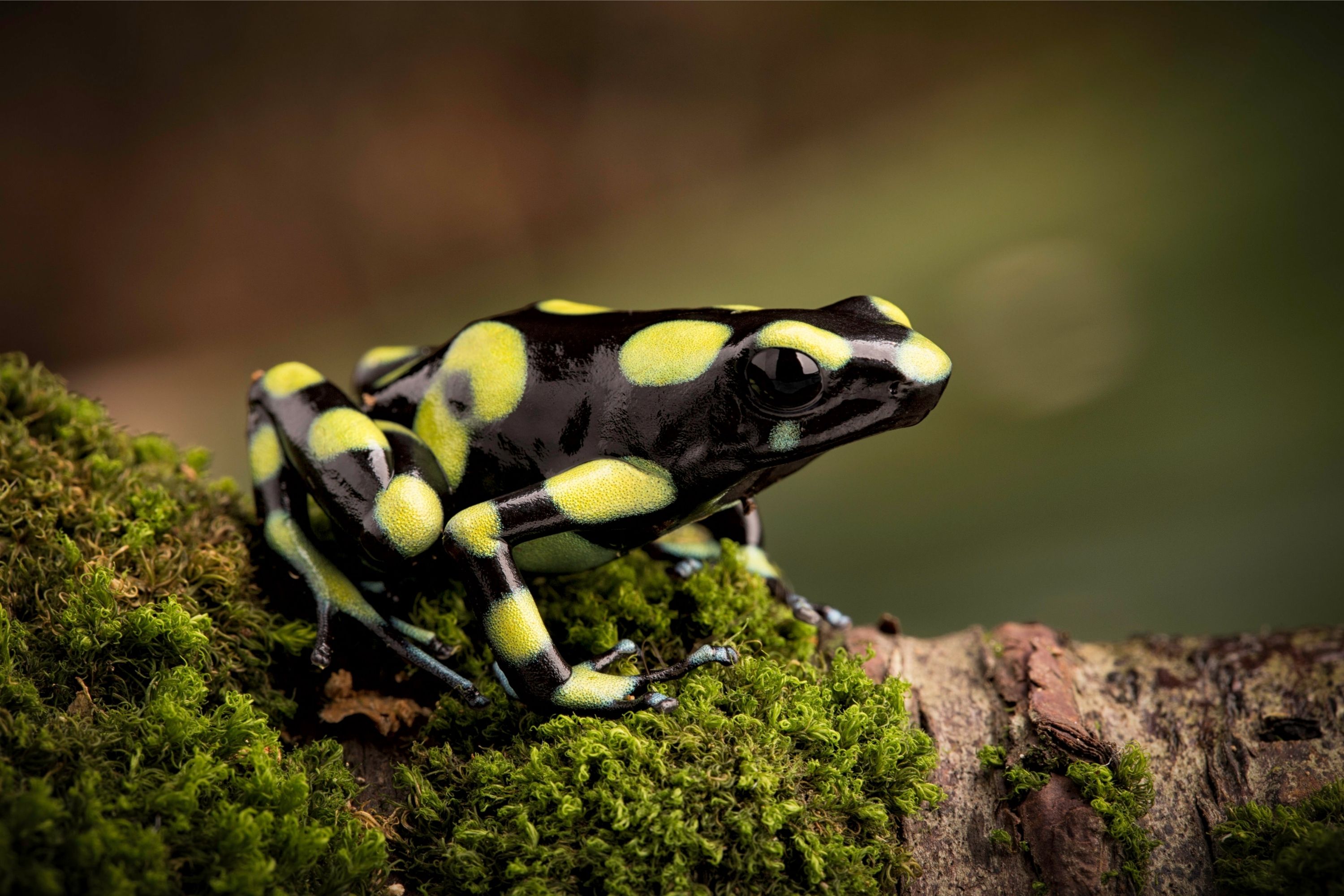Green and black poison dart frog
(Dendrobates auratus)

Description
The green-and-black poison dart frog (Dendrobates auratus), also known as the green-and-black poison arrow frog and green poison frog (among others), is a brightly colored member of the order Anura native to Central America and northwestern parts of South America. This species has also been introduced to Hawaii.It is one of the most variable of all poison dart frogs next to Dendrobates tinctorius and some Oophaga spp. It is considered to be of least concern from a conservation standpoint by the International Union for Conservation of Nature. The green-and-black poison dart frog has the typical appearance of the members of its family. Males average 0.75 inches (1.9 cm), while females are slightly larger, averaging an inch or longer. The green-and-black poison frog typically has mint-green coloration; however, this pigment can also be forest, lime, emerald green, turquoise, or even cobalt blue or pale yellow. Mixed with this typically green are splotches of dark color, ranging from wood brown to black. The green-and-black poison dart frog is one of the most variable of all poison frogs in appearance; some have black or brown splotches, others are dappled, or have "splashes" of black, like Oophaga sylvaticus. The green-and-black poison dart frog is found in the humid lowlands from southeastern Nicaragua on the Atlantic slope and southeastern Costa Rica on the Pacific coast through Panama to northwestern Colombia (Chocó Department).An introduced populations exist on Oahu; the species was purposefully introduced there in 1932 for mosquito control. Later on, it seems to have also become established on Maui. The green-and-black poison dart frog, while not the most toxic poison dart frog, is still a highly toxic animal. The very small amount of poison the frog possesses is enough to make a human heart stop beating. However, like most poison dart frogs, the green-and-black poison dart frog only releases its poison if it feels threatened, and wild specimens can be handled provided the human holding it is calm and relaxed. The green-and-black poison dart frog, as with all poison dart frogs, loses its toxicity in captivity due to a change in diet. This has led some scientists to believe that the green-and-black poison frog actually takes its poison from the mites and other insects on which it feeds
Taxonomic tree:







